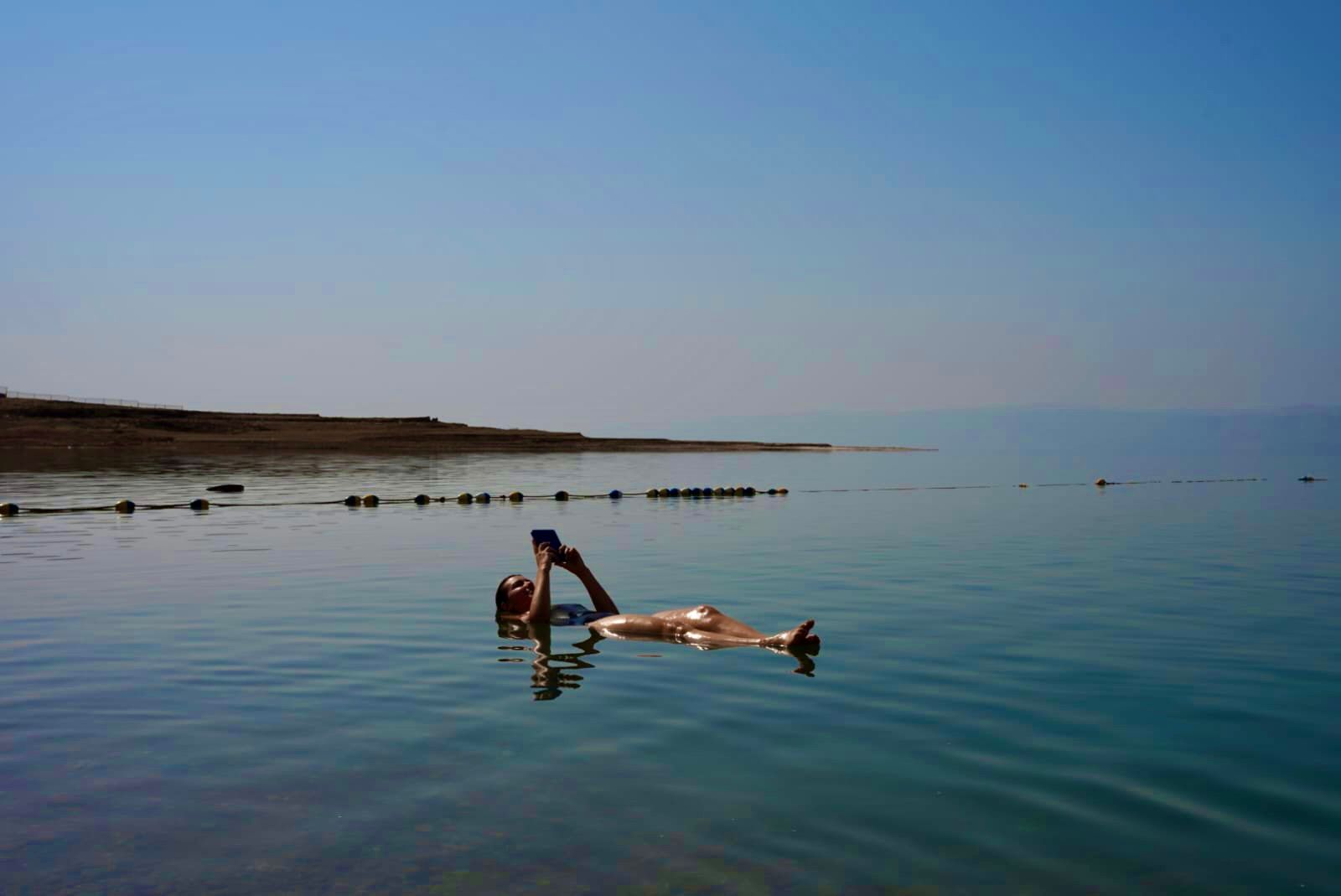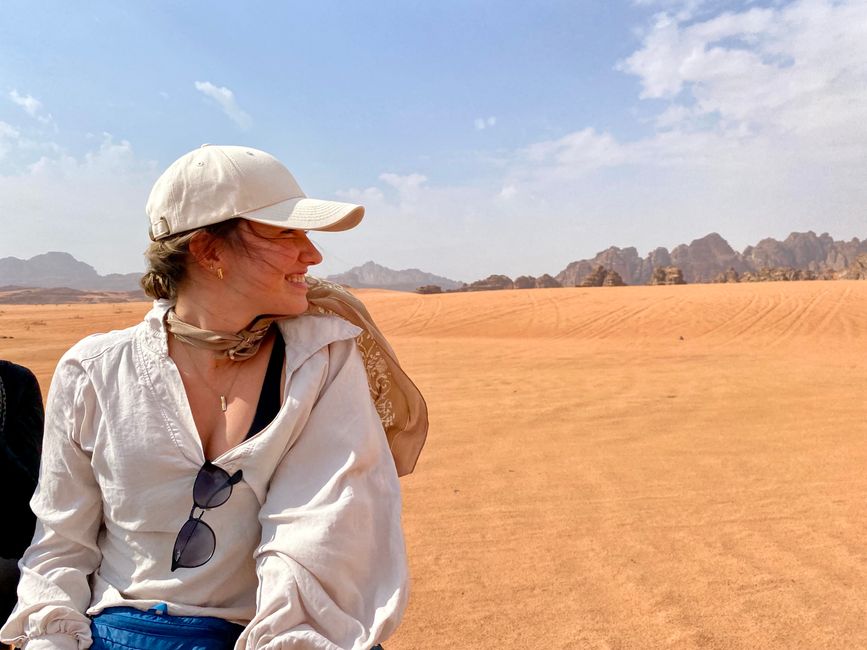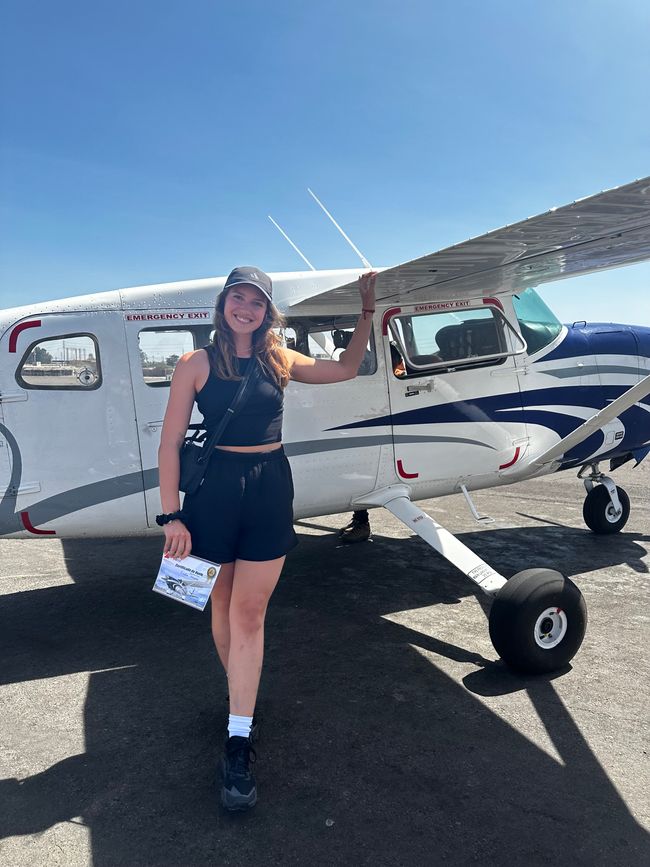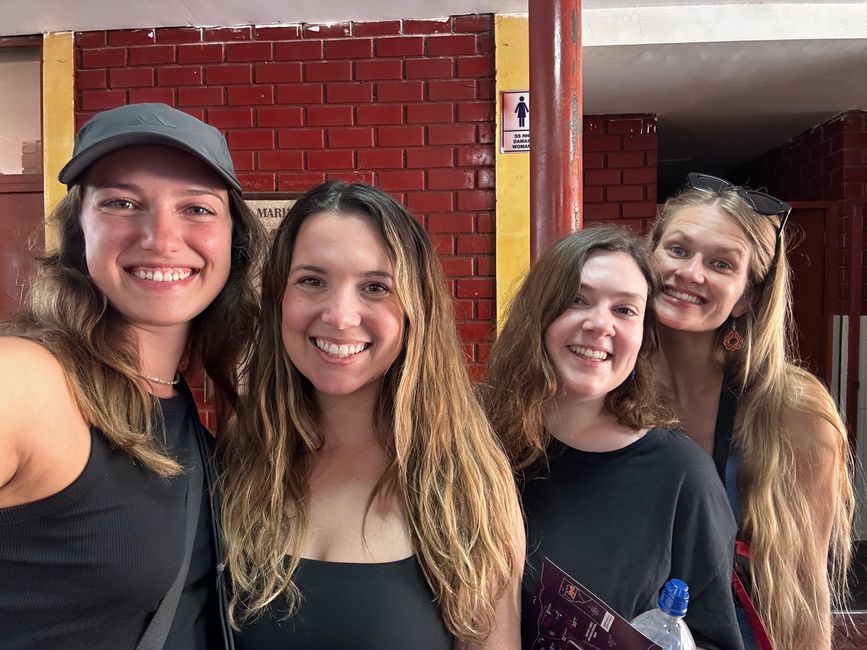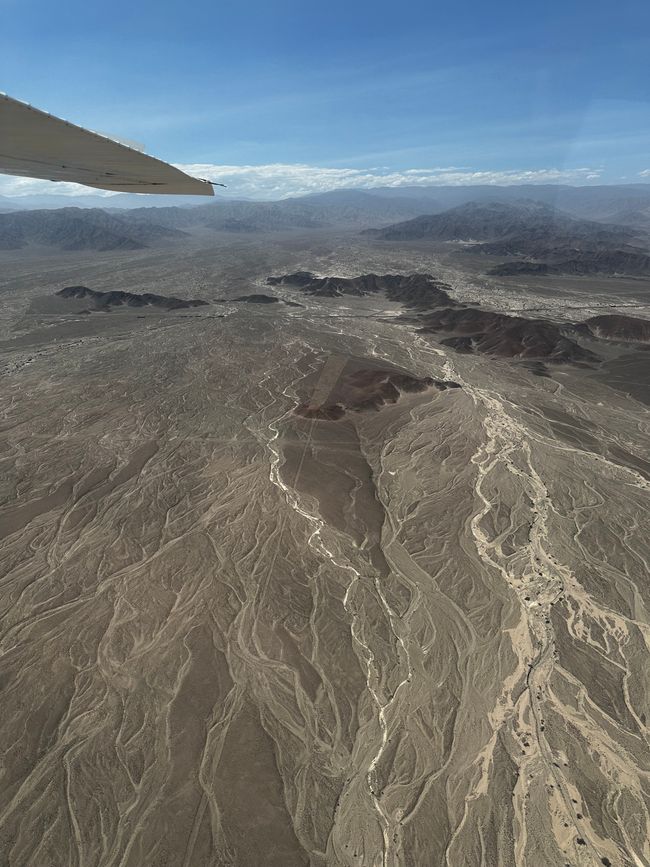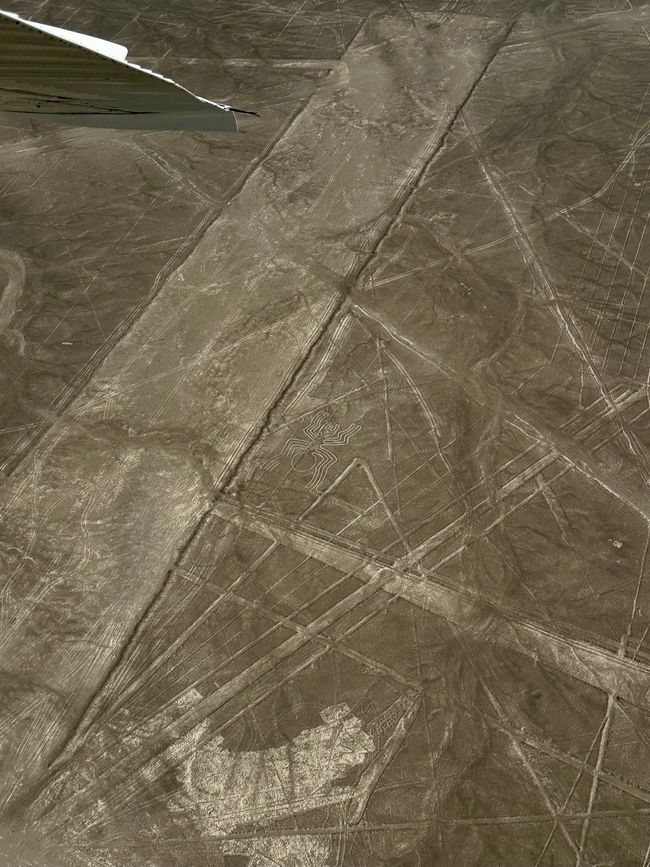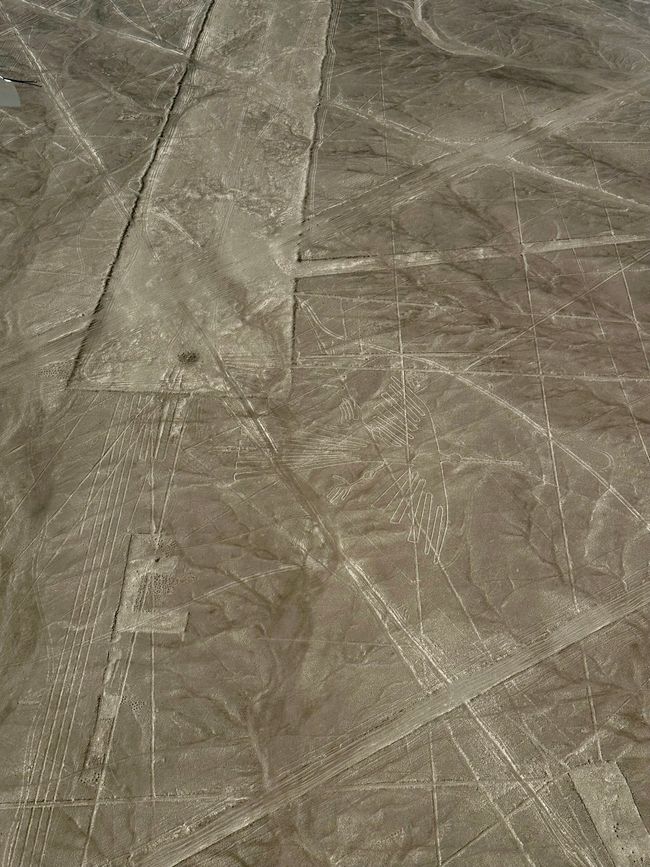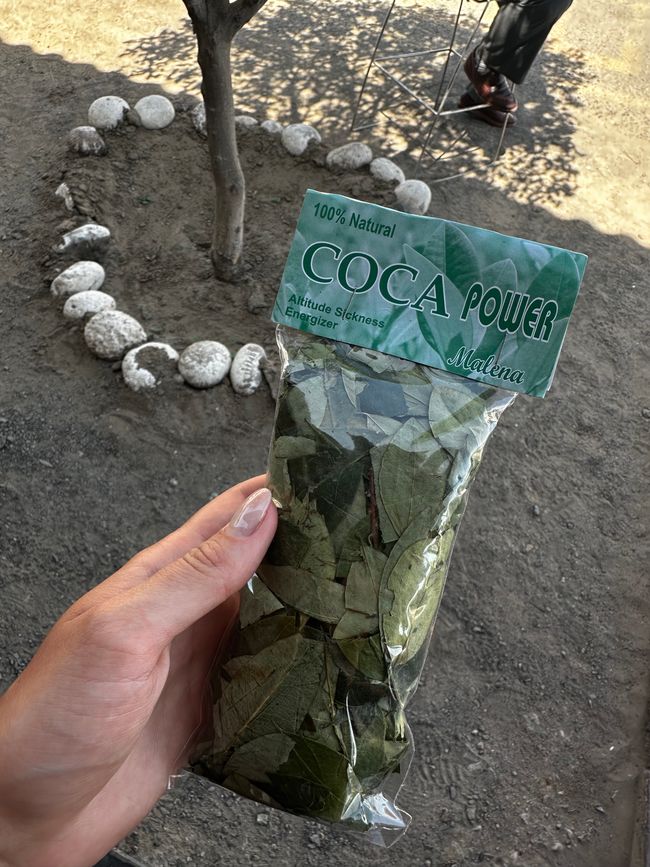Nasca & Nachtbus
Ipapashiwe: 11.05.2024
Whenever I had a single room in a hotel, I used the time (and especially the space) to unpack my entire backpack and cancel it again. Every time I ask myself how it ever fit in this backpack, but it works anyway (so far). At breakfast in the hotel there is fresh fruit again and I enjoy the free minutes I still have before the flight over the Nazca Lines.
Soon I'm picked up and we drive about 20 minutes to the airport in Nasca, which is a little outside the city and where the small planes that fly tourists through the desert are located. While our small group waits, I hear familiar voices and am happy to see a few faces from my G-Adventures group again. What a coincidence! That's what I like about traveling: lots of people are traveling alone, but because of similar routes, it's more common to see the same people again in some small town in the Peruvian desert with whom you've had such great moments.
Now it's time for us to head to the plane: there are seven of us in the plane, including the pilot and co-pilot, and we get our flight certificate beforehand - very daring. As soon as we're in the air, we quickly move away from the airport and see the first geoglyphs. 12 geoglyphs are shown on our map, but there are so many more in between that we can see from the air. We are repeatedly reminded to look left or right and are told what we can see here in the Pampa Colorada. Unfortunately, we don't learn much on the flight - there isn't enough time for that. But as you've probably already read in an older blog post, I'm prepared to pass the information on to you.
The Nasca lines were discovered around 1927, but they were created during the Nasca era around 400-600. Over 10,000 years ago, plants were still growing in the area, but when the Nasca settled here, everything was already dry and one thing is particularly important for survival: water. That is why many of the geoglyphs represent a connection to water: the spider for rain, the monkey for the rainforest, the whale for the sea. The Nasca "drew" their lines in the ground by eroding the upper layer of sand and using larger stones for the external markings. They were probably used for prayers, offerings and "open temples" to their gods - for example for water. In the vicinity of Nasca you can also look at an aqueduct and learn more about it. Other symbols, such as the condor, represent Peruvian culture or for praying for strength (the dagger).
There are also exciting theories about the Nasca that revolve around aliens who are said to have created the lines. One geoglyph shows a small dinosaur: How would the Nasca know about dinosaurs? Questions upon questions that will probably remain unanswered as a mystery.
Back on the ground, I get the first opportunity to buy coca leaves. Since they have already risen from 520m in Nasca to 2,300m in Arequipa overnight, I equip myself and am excited to see whether chewing the leaves or drinking the tea will help me later on in the journey. Now it's time to get back on the night bus, which will drop me off in Arequipa tomorrow morning. I've become a real pro at preparing for the night buses. Maybe I'll take a look at the night train offers at home...
Phendula

Iingxelo zohambo Peru
